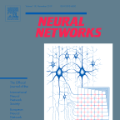Graph neural networks (GNNs) have received tremendous attention due to their superiority in learning node representations. These models rely on message passing and feature transformation functions to encode the structural and feature information from neighbors. However, stacking more convolutional layers significantly decreases the performance of GNNs. Most recent studies attribute this limitation to the over-smoothing issue, where node embeddings converge to indistinguishable vectors. Through a number of experimental observations, we argue that the main factor degrading the performance is the unstable forward normalization and backward gradient resulted from the improper design of the feature transformation, especially for shallow GNNs where the over-smoothing has not happened. Therefore, we propose a novel orthogonal feature transformation, named Ortho-GConv, which could generally augment the existing GNN backbones to stabilize the model training and improve the model's generalization performance. Specifically, we maintain the orthogonality of the feature transformation comprehensively from three perspectives, namely hybrid weight initialization, orthogonal transformation, and orthogonal regularization. By equipping the existing GNNs (e.g. GCN, JKNet, GCNII) with Ortho-GConv, we demonstrate the generality of the orthogonal feature transformation to enable stable training, and show its effectiveness for node and graph classification tasks.
翻译:由于在学习节点表达中具有优势,这些模型依靠信息传递和特征转换功能来对来自邻居的结构和特征信息进行编码;然而,堆叠更多的卷进层会大大降低GNN的性能。最近进行的大多数研究将这一局限性归因于过度移动的问题,因为节点嵌入会聚集到无法区分的矢量中。通过一些实验观察,我们认为,使性能下降的主要因素是因地貌转换设计不当而导致的不稳定的前向正常化和后向梯度,特别是对于没有进行过度移动的浅层GNNN的地貌转换。因此,我们提议进行新的或横向地貌特征转换,名为Ortho-GConv, 通常可以增强现有的GNNN骨干稳定模型培训,提高模型的概括性能。具体地说,我们从三个角度,即混合重量初始化、或分层变换以及正态的调整,通过使现有的GNNNNN(e.g.g.G.G.Net)和GNF.S.S.S.S.Secal Instrual 显示G.G.G.G.和Gnalalalal-C.G.G.K.



